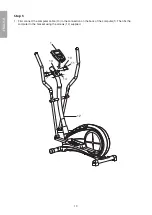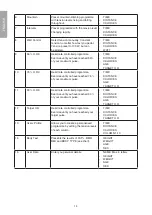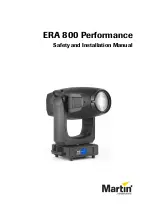
17
EN
G
LIS
H
6.5 Fitness-test (Pulse Recovery)
This test is personal and is used to measure your pulse after you have finished exercising.
1. After your workout pass, push [PULSE RECOVERY] once.
2. Hold the pulse sensors in both hands and begin pedalling.
. The timer counts down from 60 seconds to zero.
4. When the test is over the result is displayed:
F1.0
Excellent
F2.0
Good
F.0
Average
F4.0
Below average
F5.0
Poor
F6.0
Very poor
7. Exercise instructions
Many different factors have to be considered when you plan your training program. If you have been
physically inactive for a long time or if you suffer from any kind of illness you need to consult with a physician
before you plan your exercise program.
Intensity
• To achieve the best possible results the right intensity needs to be selected, this is based on your pulse.
This equation is often used to calculate your maximum pulse:
Max pulse = 220 – Your age
• During training your pulse should be between 60% and 85% of your maximum pulse (see the pulse chart
at the end of the instruction manual).
• For the first few weeks of exercise your workout pulse should be 60% of your maximum pulse.
• When you have improved your values and have been training for a few weeks you can allow your workout
pulse to increase up to 85% of your maximum pulse.
Burning Fat
The body starts burning fat at 60% of your maximum pulse. The optimal fat burning will be at 60 to 70% of
your maximum pulse. You will achieve the best results if you normally do workouts of 0 minutes per week.
Example:
You are 52 years old and are starting to exercise and burn fat.
Maximum pulse rate
= 220 – 52 (age) = 168 pulse/min.
Lowest pulse rate
= 168 x 0.6 = 101 pulse/min.
Maximum workout pulse rate
= 168 x 0.7 = 117 pulse/min.
A workout pulse between 101 and 117 during training gives the best fat burning result in this example
according to the equation.
Summary of Contents for ER-6472C
Page 2: ......
















































